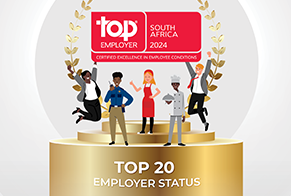As Managing Editor, Tsebo Facilities Solutions Senior Solutions Manager, Bouwer Kleynhans is the driving force behind The South African Facilities Management Handbook the only book to be published that deals specifically with the South African Facilities Management market. So much of the information, we receive in South Africa is from overseas, from the UK, USA or even Australia and India. This book is targeted specifically at the nuances of the South African Market. The book is endorsed by the South African Facilities Management Association (SAFMA) and so is a must have for any local Facilities Manager or indeed Property Occupier that needs to understand more about probably their biggest physical asset and how to manage it for maximum productivity.
Bouwer Kleynhans mentions that the idea for the book started when he did the Certified Facility Manager (CFM) Exam for IFMA. The handbook used as the study guide was “The Facility Management Handbook” written by David Cotts but the book predominantly focussed on America and how FM is conducted in the US. After a search for a South African version, it was clear that no material existed and the decision was made to do a South African version of the Cotts title.
The problem that arose with such an all-encompassing title was what to include in the book? The main objective was to obtain SAFMA endorsement. Bouwer decided to make it a collaborative work and get as many specialists as possible to contribute to the book. There are 7 co-authors and 7 other people who also had inputs. From the beginning, the authors decided that the book should cover the A-Z of FM and had several workshops to determine what to include and to which level of detail. Three main reasons, identified by the authors as to why a book of this nature is required in South Africa, led to the conceptualisation of this book.
Firstly, to make information available in an accessible format to assist Facilities Managers to execute their functions as efficiently as possible. The authors have investigated and addressed as far as possible all areas relevant to Facilities Managers.
Secondly, little, if any, literature on this topic is available in a South African context as most of the information pertaining to Facilities Managers is sourced from abroad.
Thirdly, to serve as an education and training tool for Facilities Managers. The aim is that the book can be prescribed as an educational aid by tertiary institutions or any training organisation. Since SAFMA has endorsed the book, it can also be used in the accreditation journey of Facilities Managers.
These reasons highlight the passion of the authors to elevate and promote Facilities Management (FM) as a profession. When school children are introduced to possible occupations to choose from, Facilities Management is never mentioned. This could be as result of it being relatively new as a formal occupation, or that it is not seen as one of the glamorous occupations such as doctors, engineers or architects. Consequently, our objective, together with all the Facilities Managers in South Africa who share a passion for Facilities Management, is to make it an occupation of choice.
It has been said that Facilities Managers should be elevated from the plantroom to the boardroom. This may be true but not always practically feasible as organisations need the expertise in the plantroom as well. Therefore, this book not only deals with technical information around the maintenance of equipment but also with other areas that a Facilities Manager needs to be informed or knowledgeable about. For example, the financial management chapter provides invaluable information to Facilities Managers on how to prepare project proposals and to engage with financial decision makers.
The end goal of the book is to elevate Facilities Management. Successful organisations will no longer view Facilities Management as a non-core “overhead” but as an integral part of the organisation with significant strategic importance.
There are 401 pages in the published book.
1. Introduction
In this chapter, the history of Facilities Management is discussed as well as definitions and core competencies of FM. The chapter further goes into the relationship (similarities and differences) between Asset Management and FM.
2. Aspects of Facilities Management
This is a very broad chapter and areas related to FM that did not fit into or did not valid its own chapter were addressed in this chapter. The contents are:
- Property Strategy – Strategic objectives of various property strategies e.g. Listed fund held properties compared to Government owned properties
- FM Services and Functions – This section lists all the services and functions classified as Hard or Technical services, Softs and Business Support Services.
- Facilities Management Process – 4 phase FM process which are Drivers, Policy and Strategy, FM Planning and Execution. Each phase is discussed in detail and what activities are required.
- Asset knowledge, condition assessment and risk rating – A detailed explanation of how to compile asset registers and conduct condition assessments while incorporating a risk analysis.
- Maintenance – The basic principles of maintenance are discussed e.g. planned maintenance in relation to reactive maintenance.
- Asset life cycle – Three aspects of the life-cycle are discussed namely life-cycle Process, life cycle cost and life-cycle budgets.
- FM Operating models (insourcing outsourcing) – Advantages of both are discussed.
- Service desk, call centre, help desk – The importance and key functionalities of a contact centre are discussed.
- Mobilisation & Implementation – The important phases and associated activities that occur before a contract commences.
- Relocation management – Relocation and move management and key drivers are looked at.
- Quality management – Quality plans and the importance of certification for FM are discussed.
- Disaster recovery and business continuity – Business continuity management are addressed along with what components form part of a business continuity plan.
- Performance measurements of SLA’s – Benchmarking and Satisfaction surveys are discussed.
- Design Review – The important role FM plays as part of the design team with examples are given.
- FM as a career – For any person that wants to work or are already involved in FM and aspects such as accreditation with SAFMA and the various job roles within FM are addressed.
- The human element – FM is perceived to be a negative environment due to the nature of complaints, how this can be turned around and what makes FM exiting.
3. Occupational Health and Safety
A detailed 48-page chapter on health and safety with specific referencing to the Occupational Health and Safety act and its implications and required actions for Facilities Management.
4. Financial Management
A comprehensive chapter on finances which deals with concepts such as cash flows, time value of money, discount rates, cap rates and property yields. Various budgeting processes are discussed e.g. capital budgets and operating budgets.
5. Contracts and Risk
The legal chapter that addresses the legal contract and its components, Service Level Agreements, Performance measurement, agreement management and administration, risk allocation in FM and negotiation tactics.
6. Operations
This chapter discusses the important area of Soft services (cleaning, hygiene, security, waste management, garden maintenance, pest control) and how to manage these. Further discussion follows on business support services management and hospitality and catering services.
7. Building Systems
All technical aspects of a building are addressed from the structural elements to finishes, roofing, flooring systems, wet services, fire, HVAC, vertical transportation and security equipment. The book does not allow space for a detailed discussion of each element but introduces each system and explains what operational and maintenance are required.
8. Utilities Management
An introductory chapter for FM practitioners into the increasingly important aspects of energy and water management.
9. Technology
All the various systems and software systems that assist the work of FM are introduced and discussed. Examples of these are Building Management System (BMS) and Computer-aided Facilities Management (CAFM).
10. Space Management
The various aspects of office space management which include standards, space strategies, space planning and layouts are discussed.
11. Project Management
All the required Project Management principles are discussed and examples of how an FM practitioner should implement these are given.
12. Green interventions and certification of existing buildings
An introduction to the greening of buildings as well as the mechanics of the Existing Building Performance (EBP) tool that was developed by the Green Building Council of South Africa (GBCSA) are discussed and guidance to Facilities Managers of how to use this tool are given.
13. Property and asset management
An introduction to other role players in the property industry for Facilities Managers to understand their roles and functions.
The book is published by LexisNexis and can be ordered from the following link: The South African Facilities Management Handbook
Question: What do you think of the book?- give us your thoughts



